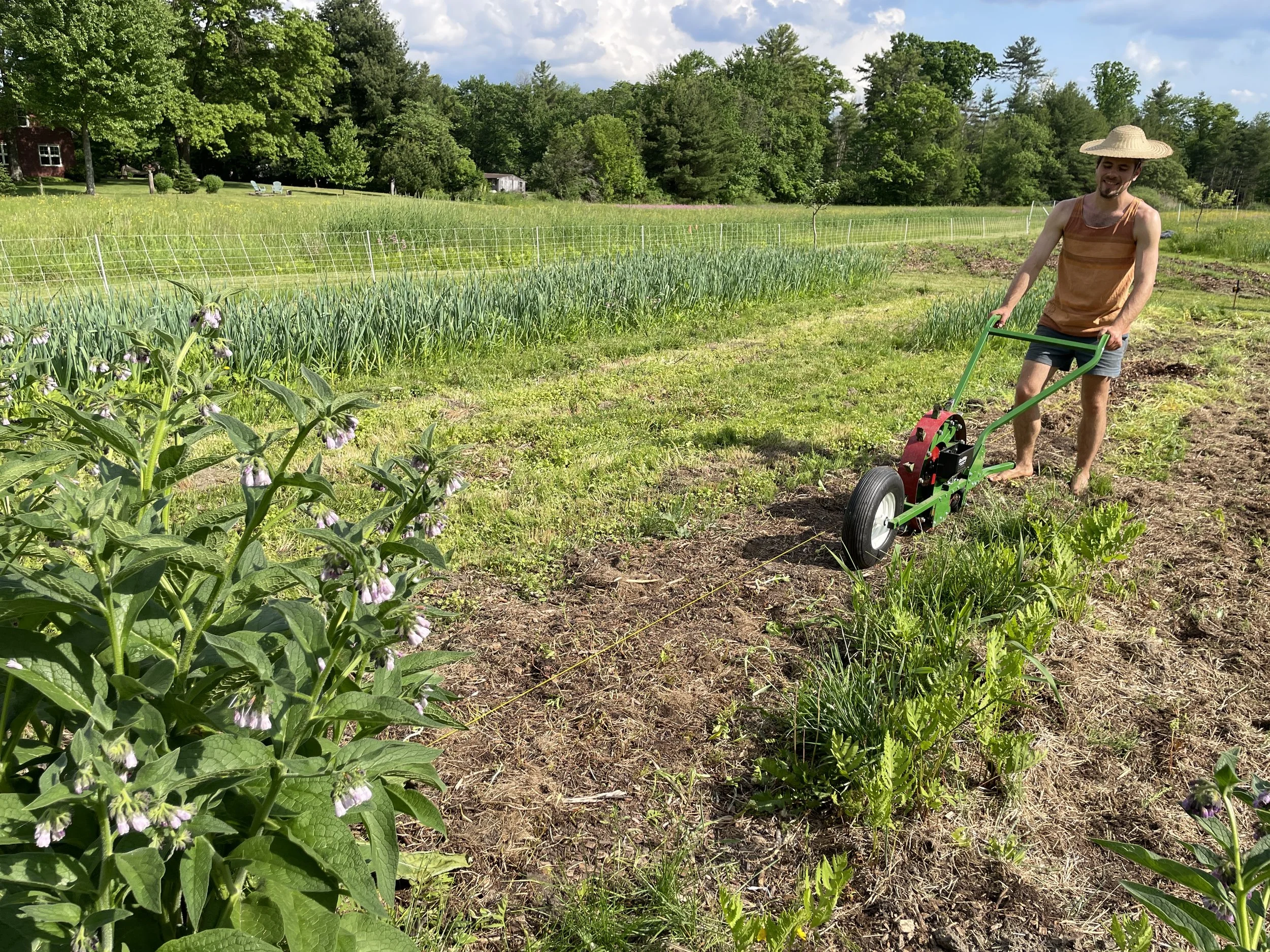Appropriate Technology: The Champion Seeder
Farmer, poet, and pioneer Wendell Berry proposed nine “rules for tools” to serve as a litmus test when considering, “should I buy this object?” After all, some tools have the potential to improve farm efficiency, encourage good posture and healthy movement, and simplify cumbersome processes. However, other tools may degrade the environment by emitting fossil fuels, pose unnecessary risk of injury to users, or otherwise create more problems than they solve.
Berry suggests that a new tool purchase should have certain qualities, for example:
It should do work that is “clearly and demonstrably better than the [tool] it replaces.”
“It should be repairable by a person of ordinary intelligence, provided that [they have] the necessary tools.”
“It should not replace or disrupt anything good that already exists, and this includes family and community relationships.”
Guidelines like these inform our choice of equipment at Little Bean Farm and Pantry. Added together, we even come close to meeting Berry’s threshold for “ordinary intelligence!”
Scenes from the 2024 farming season.
Appropriate Technology
Thoughtful consideration of “the right tool for the job” has led us to seek out appropriate technologies, a term coined by German economist E.F. Schumacher to describe tools that are small scale, decentralized, and energy efficient. Appropriate technology, according to community land trust pioneer Bob Swann, has four imperatives: it must be simple, local in character, labor intensive, and ecologically sound.
Schumacher says that the use of appropriate technology is not only gentler on the environment, it is also more humane. He argues that the way we produce our food (and everything else)– the modes of production– have profound effects upon workers’ quality of life and society at large. The tools we use to grow our food determine how and what we grow, where and how we live, who we meet, how we relax and recreate, what we hear and see, what we depend on or are free from, and what we think (Good Work, Schumacher, p. 41-42).
In our case, “appropriate technologies” are tools built for cultivation on a scale larger than garden-size but smaller than industrial-scale. They are tools which do not rely on fossil fuels, grant us opportunities to quietly perceive our surroundings, strengthen our bodies, and that correspond to the character of the soil where we farm.
Little Bean Farm’s Appropriate Technology #1: The Champion Seeder
Our soil is dense, rich, hydrated clay; it is full of subterranean life. Conventional push-seeder models are too flimsy to deposit seeds into soil of this density, and the alternative tractor-powered mechanisms are excessive for our purposes.
Instead, the appropriate technology we have adopted is a heavy-duty, domestically manufactured Champion Seeder. Ben discovered this tool in an Amish farm catalog and located a company which fabricates them for low-tech communities. We learned that the company typically sells three to five of these seeders a year, manufacturing them nearly exclusively for Amish farmers.
Just a barefoot, bean-loving guy, out for a rip with his Sunset Runner beans and his new Champion seeder!
Pushing the seeder’s heavy steel frame up and down each row enables an individual to plant approximately an acre a day. To a large-scale industrial farm, the labor cost involved in working at such a pace would make use of this tool nonsensical. For our purposes, however, it is ideal (if not perfect): we spent several hours feeding variety after variety of beans into the hopper, walking methodically alongside our no-till beds, listening to the ‘clink’ of each seed being deposited into the soil from the seeder’s metal beak.
Friends and neighbors joined in throughout the day; the tool is intuitive and lends itself to community participation, something infeasible when working at tractor-scale.
Coming Up
Stay posted for more ~thrilling~ appropriate technology features, Bean Fest 2024 information, and more!

